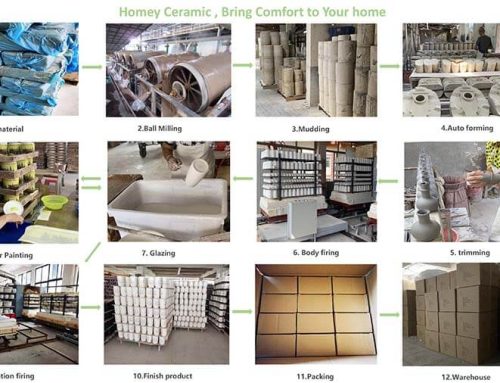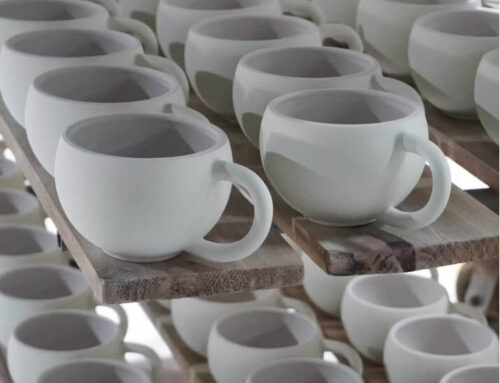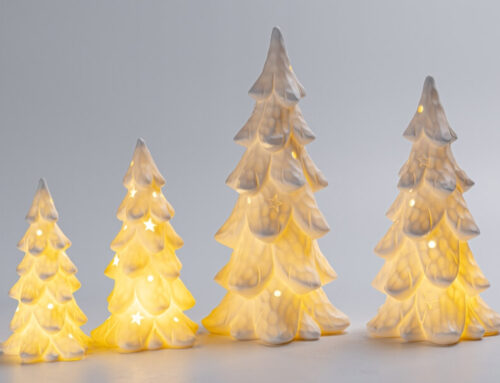As sustainability becomes a growing priority, businesses are seeking eco-friendly solutions to meet consumer demand. Ceramic products, renowned for their durability and timeless appeal, can also be an environmentally conscious choice when produced thoughtfully. In this guide, we’ll explore how to create an eco-friendly ceramic product line that benefits both the factorys and customers.
Understanding Eco-Friendly Ceramics
Eco-friendly ceramics prioritise sustainability at every stage of production, from material sourcing to manufacturing and packaging. They utilise natural or recycled materials, avoid harmful chemicals, and employ energy-efficient processes. Examples include ceramic mugs made with non-toxic glazes, plant pots crafted from recycled clay, or timeless, minimalist designs that reduce the need for frequent replacement.
Choosing Sustainable Materials
The foundation of an eco-friendly ceramic line lies in the materials: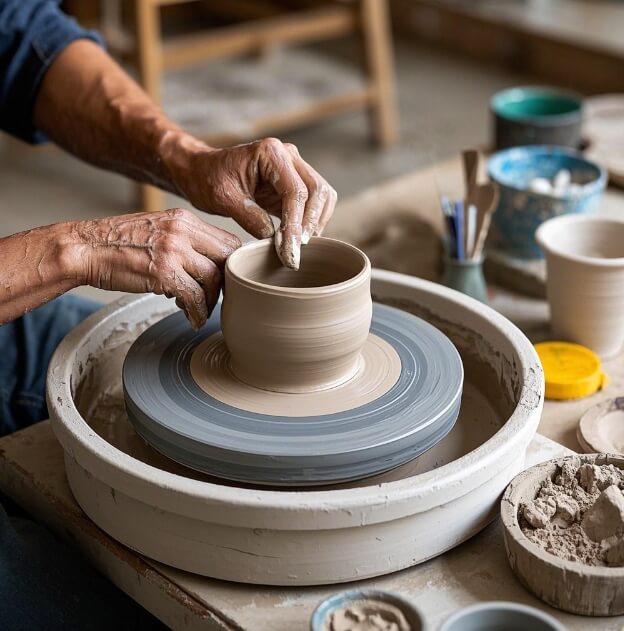
- Eco-Friendly Clay: Opt for locally sourced or recycled clay to minimise environmental impact. Using locally available clay reduces the carbon footprint associated with transportation, while recycled clay gives new life to discarded material that would otherwise become waste.
- Non-Toxic Glazes: Choose glazes free from lead and other hazardous chemicals, ensuring safety for both users and the environment. Modern advancements have made it possible to achieve vibrant colours and finishes without relying on harmful substances.
- Additive-Free Alternatives: Avoid unnecessary additives that might harm the environment during production or disposal. For instance, stick to natural clay compositions rather than those modified with synthetic binders or colourants.
- Biodegradable Additives: If additives are required, opt for biodegradable options that break down naturally and do not leave harmful residues.
- Reclaimed Materials: Incorporate waste ceramics or other recycled materials into your production process. For example, crushed ceramic scraps can be used as grog in new clay bodies, enhancing durability and reducing raw material demand.
- Natural Colourants: Use mineral-based or plant-derived pigments for decoration to further enhance the sustainability of your products.
Choosing sustainable materials not only reduces environmental impact but also showcases your commitment to responsible business practices, which appeals to eco-conscious consumers.
Energy-Efficient Production Techniques
Ceramic production can be energy-intensive, but there are ways to reduce its environmental impact:
- Low-Energy Kiln Firing: Adopt kilns designed to consume less energy or operate at lower temperatures.
- Renewable Energy Sources: Power your production facility with solar, wind, or other renewable energy sources.
- Minimising Waste: Implement processes to recycle unused clay or broken ceramics back into production.
These practices not only reduce your carbon footprint but can also lower production costs in the long run.
Designing for Sustainability
Sustainable design ensures your products remain functional and appealing for years:
- Timeless Designs: Focus on creating versatile and enduring styles that avoid seasonal obsolescence. Products that transcend trends reduce the need for frequent replacements, contributing to a more sustainable lifecycle.
- Incorporate Recycled Elements: Blend reclaimed materials into your designs to give them a unique, eco-friendly appeal. For example, using fragments from discarded ceramics or incorporating natural textures can add distinct charm.
- Eco-Friendly Packaging: Use biodegradable materials like cardboard, kraft paper, or reusable fabric wraps for packaging instead of plastic. This not only reduces waste but also aligns with consumer preferences for sustainable choices.
- Modular and Multi-Functional Products: Design ceramics that serve multiple purposes or can be easily repaired and reused. For instance, modular dinner sets that can be replaced piece by piece extend the product’s usability.
- Collaborative Design Processes: Involve your customers in the design process through customisation options, ensuring that each product feels personal and less likely to be discarded.
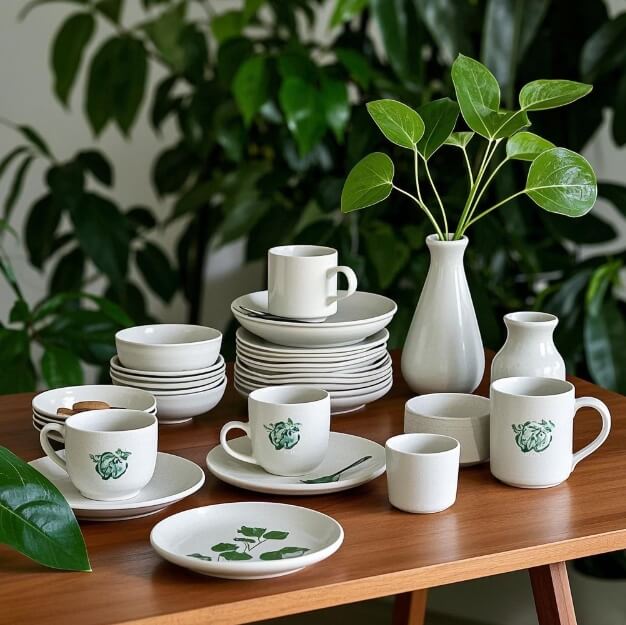
Sustainable design is not just about the final product but also about creating value and emotional connection, encouraging customers to cherish and maintain their ceramics for longer periods.
Collaborating with Ethical Ceramic Suppliers
To ensure your ceramic line stays true to its eco-friendly mission, partner with suppliers who share your values:
- Supplier Audits: Assess potential suppliers for their environmental practices and certifications.
- Transparency: Work with partners who are open about their sustainability efforts.
- Local Sourcing: Reduce transportation emissions by sourcing materials locally whenever possible.
Collaboration with ethical suppliers strengthens your product’s eco-friendly credentials.
Communicating Eco-Friendliness to Customers
Marketing plays a crucial role in promoting your eco-friendly ceramic line:
- Highlight Sustainable Practices: Share the story of your materials, processes, and partnerships through your website and packaging.
- Certifications: Display relevant eco-labels or certifications to build trust.
- Storytelling: Engage customers with narratives about your commitment to sustainability and the journey behind your products.
Clear communication helps customers connect with your brand’s values and make informed purchases.
Case Studies or Success Stories
Take inspiration from businesses that have excelled with eco-friendly ceramic lines. For instance:
- A small pottery studio that reduced its carbon footprint by switching to renewable energy-powered kilns.
- A distributor offering plant pots made from recycled clay, capturing the interest of eco-conscious consumers.
These examples demonstrate that sustainability can drive both innovation and success.
Benefits for Businesses and the Planet
Eco-friendly ceramics offer advantages that extend beyond environmental impact:
- Consumer Appeal: Meet the expectations of an increasingly eco-conscious market.
- Brand Reputation: Enhance your brand’s image by aligning with sustainability values.
- Environmental Impact: Reduce waste, conserve resources, and contribute to a healthier planet.
By adopting sustainable practices, you can achieve long-term growth while making a positive difference.
Guide for Small Business Owners, Distributors, and Importers: Partnering with Homey Ceramic
If you’re a small business owner, distributor, or importer looking to create an eco-friendly ceramic product line, Homey Ceramic is your ideal partner. Here’s why:
- Customisable Eco-Friendly Designs: Homey Ceramic offers bespoke designs tailored to your business needs, including eco-friendly options like recycled clay and non-toxic glazes.
- Wide Product Range: From ceramic mugs and plates to vases and plant pots, Homey Ceramic provides a variety of sustainable products to enhance your offerings.
- Proven Expertise: With years of experience in sustainable ceramics, Homey Ceramic ensures high-quality production and innovative designs that appeal to eco-conscious consumers.
- Ethical Practices: Homey Ceramic is committed to environmentally responsible production methods, including energy-efficient kilns and waste recycling.
- Small Batch Options: For small businesses, Homey Ceramic accommodates lower minimum order quantities, making it easier to start your eco-friendly product line without overwhelming upfront investment.
- Reliable Shipping and Support: As a trusted supplier, Homey Ceramic ensures timely delivery and excellent customer service to support your business every step of the way.
Collaborating with Homey Ceramic allows you to tap into the growing demand for sustainable products, positioning your brand as a leader in eco-friendly practices.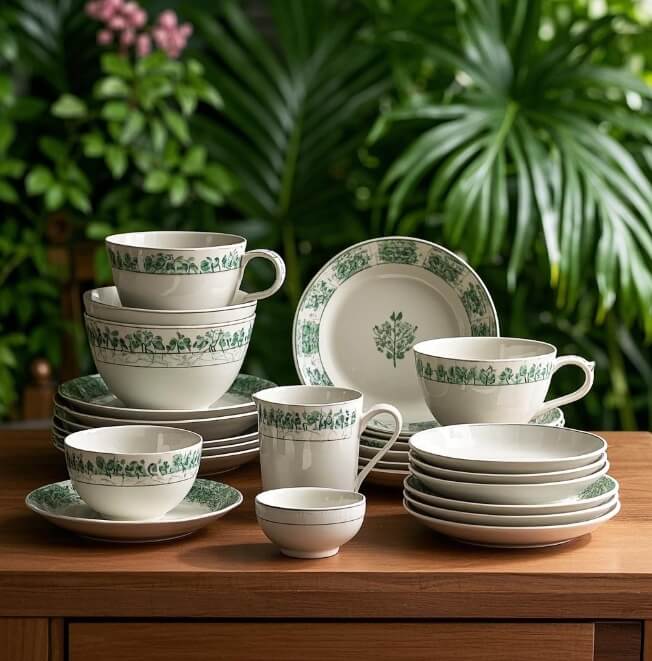
Conclusion
Creating an eco-friendly ceramic product line is not just a business opportunity but a responsibility towards our planet. By choosing sustainable materials, implementing energy-efficient techniques, and engaging customers with your story, you can build a brand that resonates with today’s environmentally conscious consumers. Start your journey towards sustainability today and make a meaningful impact with your ceramic creations.



